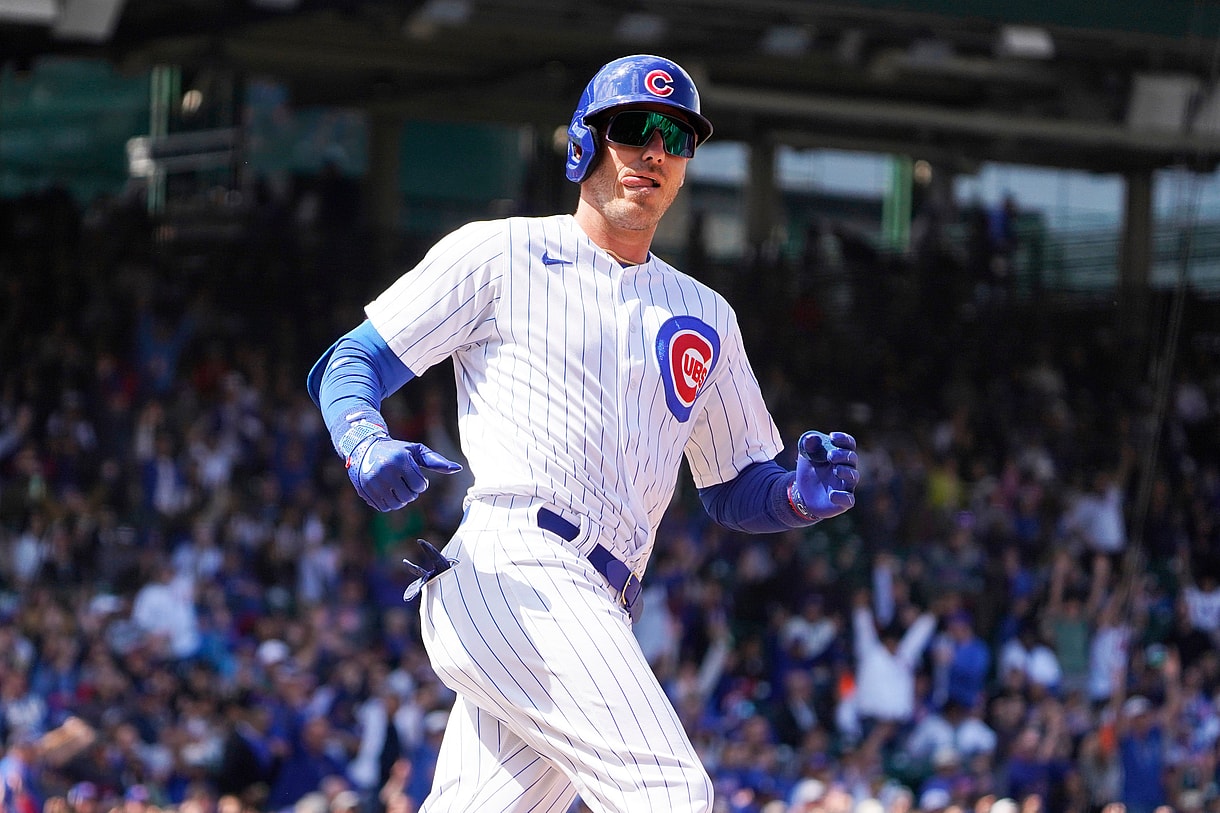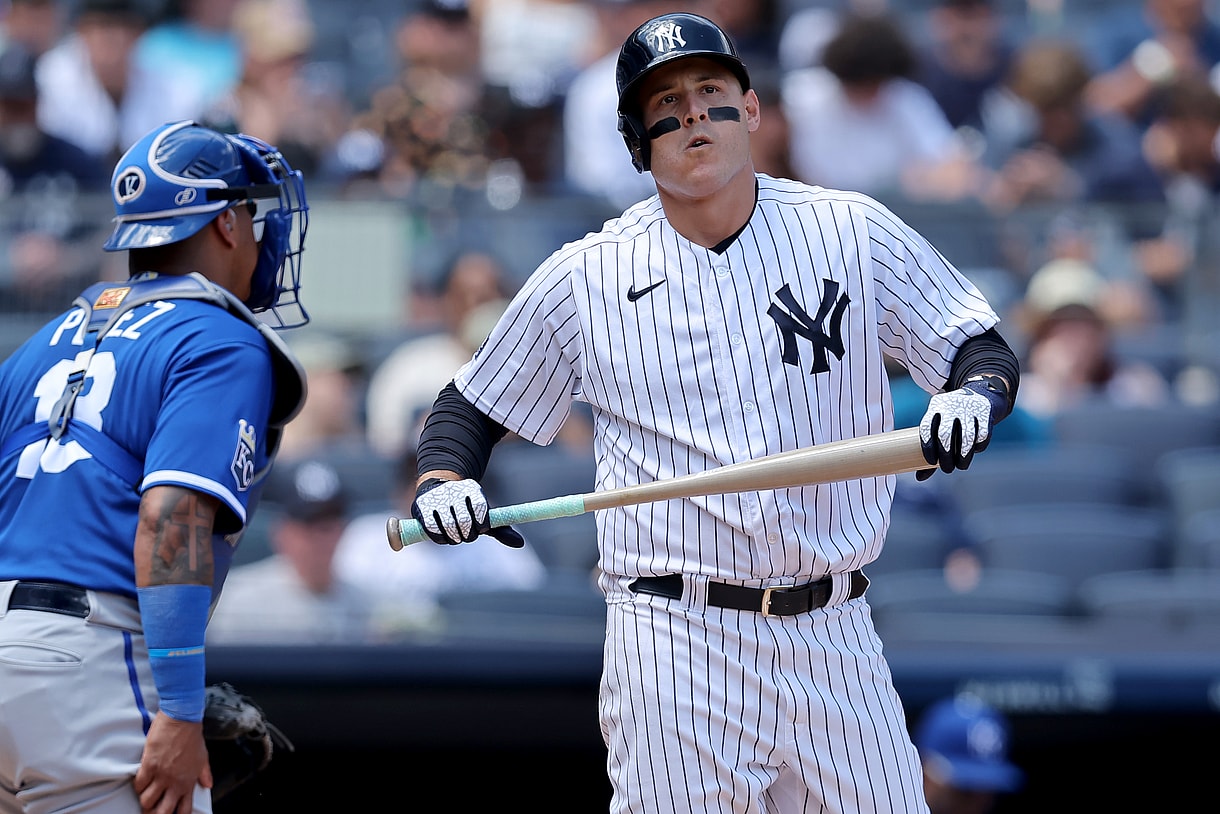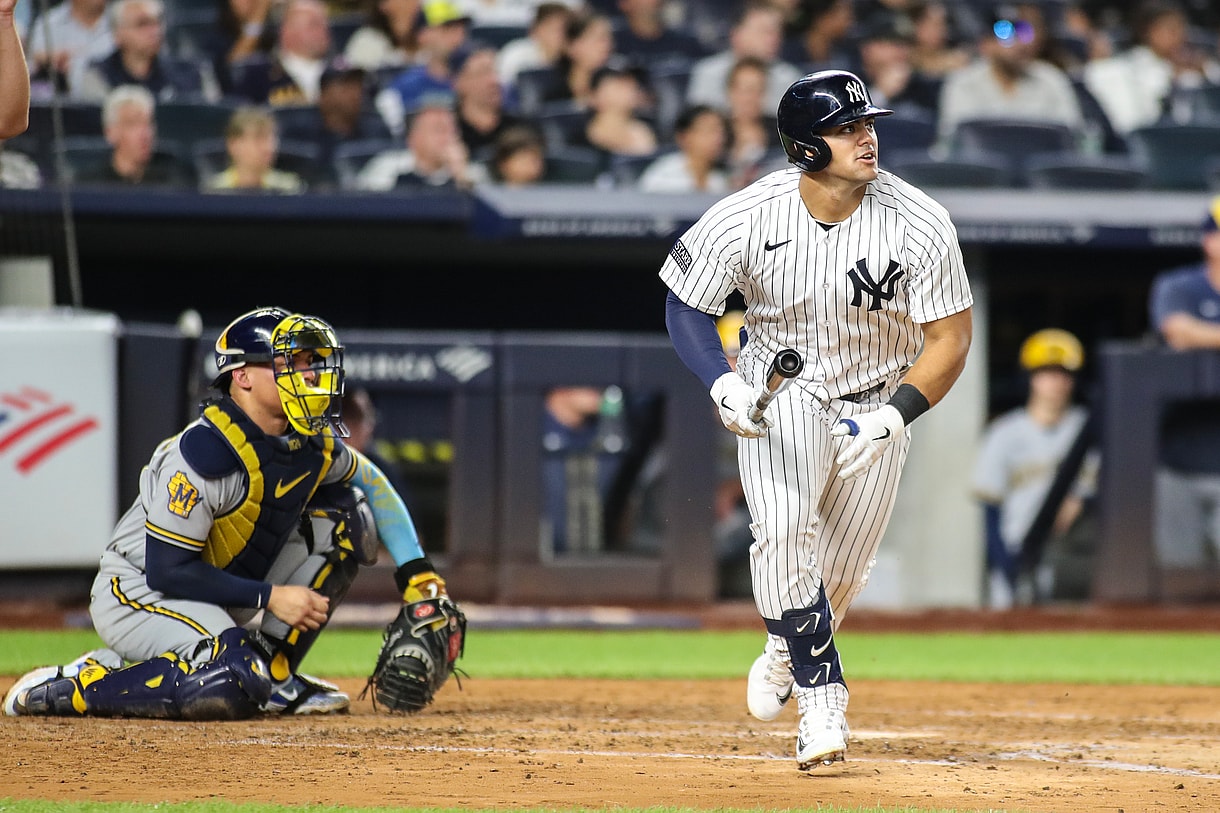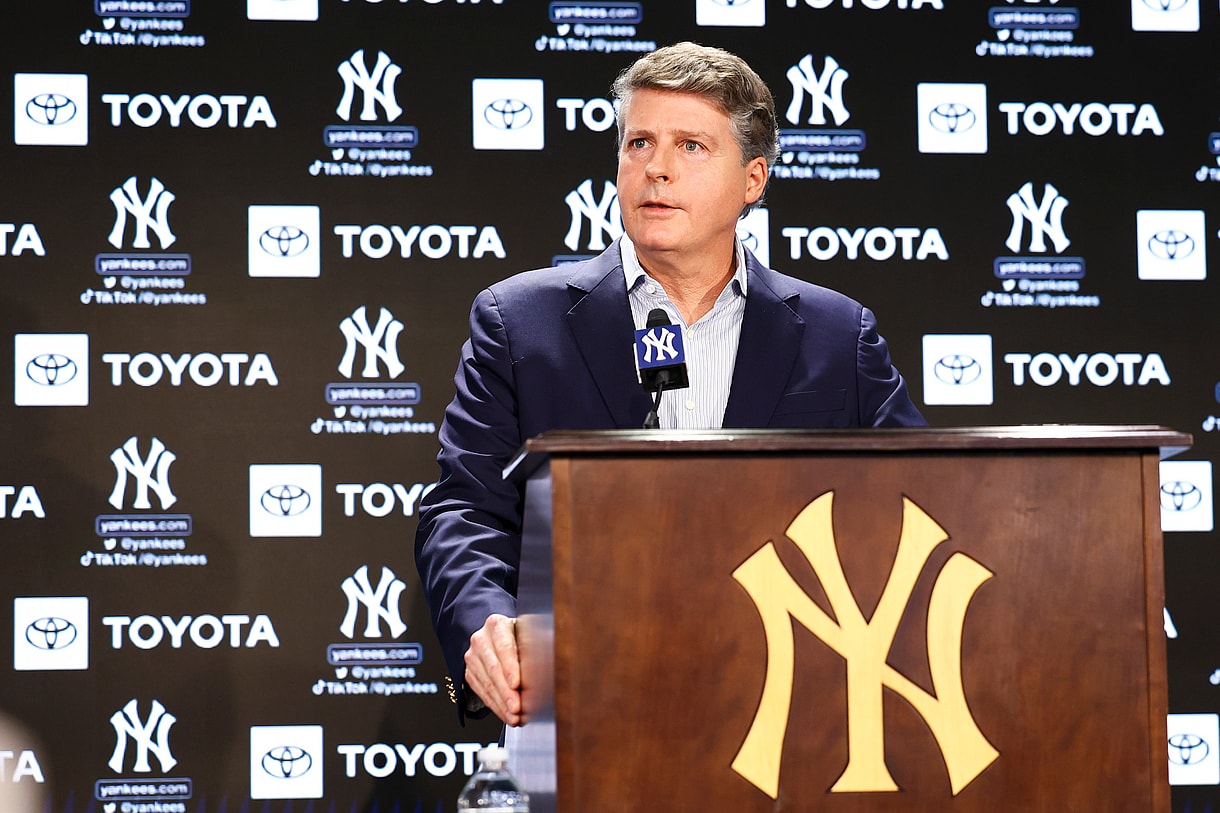
After Brian Cashman made a stunning visit overseas to go watch Yoshinobu Yamamoto pitch live in Japan, where he would throw a no-hitter and receive a standing ovation from the Yankees‘ longtime GM. Yamamoto is the best pitcher in the NPB right now, as he’s the reigning Sawamura Award winner, going for his third straight this year, but that’s not the only award he’s looking to keep under his name. He’s also the Pacific League’s reigning MVP, an award he’s also won back-to-back, staking his claim as one of the greatest pitchers in NPB history.
The Nippon Baseball League flexed their baseball talent in the World Baseball Classic, dominating en route to their third World Baseball Classic title, going undefeated. Only the 2013 Dominican Republic team went undefeated in the short history of the tournament, and they quieted doubters of international competition. For a team that needs offense, why would it make sense to splurge on pitching? Are the Yankees seemingly delusional and unaware as to what their issues are?
One of the Best Pitchers in the World
A report was revealed by Yahoo Japan that the Yankees are prepared to go well above their seven-year $155 million contract that Masahiro Tanaka signed nearly a decade ago. It’s clear that they covet the Japanese-born right-hander, and so do other teams across the league, including the Boston Red Sox, but what makes Yoshinobu Yamamoto so high-touted? First let’s take a look at the surface-level data, where the 25-year-old right-hander has been far and away the best pitcher in the Nippon Baseball League.
Over the past three seasons, Yamamoto has a 1.73 ERA across 536.2 IP, and his NPB season has yet to finish this year, where he has a stunning 1.26 ERA. He does so with electric strikeout numbers, striking out over 26% of batters faced in each of his last four seasons and flashing his always brilliant command as well. This year, Yamamoto’s 1.26 ERA is the lowest of his professional career and one of the lowest marks in NPB history. He’s the clearcut best pitcher once again in his league, and his underlying data is also spectacular.
Yamamoto does an excellent job of preventing HRs, especially this season, where he has as many complete games as he does dingers allowed, and that’s due to excellent contact-management abilities. Yamamoto has generated a 53.9% GB%, which is slightly down from his previous two seasons, where he had a 52.2% GB%. Yamamoto has seen a 4% decrease in his Splitter usage, as his fastball has improved dramatically in terms of Run-Value and success.

A big reason for that is a slight tick in velocity across the board for him, with his fastball sitting 95 MPH instead of 94.3 and the vertical life on the pitch allowing him to throw up in the zone. He possesses the fourth-best qualified Whiff Rate this season (26.1%) while posting the second-highest O-Swing% in the NPB (36.4%). What’s been impressive about Yamamoto’s 2023 season, in particular, has been the sharp reduction in HRs, which is likely due to the boosts in his velocity that have given him elite-level Stuff+ numbers.
Yamamoto only trailed Japanese teammate Shota Imanaga in the World Baseball Classic in terms of Stuff+, and that’s coupled with a command that has always been a plus tool for him. When you have a pitcher who has Stuff+ numbers that range from 115-120 and elite-level command and durability, the ceiling is a Cy Young contender. What separates someone like Gerrit Cole from Blake Snell is the ability to go into the seventh regularly, and Yamamoto is closer to a Gerrit Cole than a Blake Snell in that regard.
- The Yankees should not be deterred by Kyle Tucker’s poor market
- The Yankees might have found their next Luke Weaver in $2 million signing
- Yankees predicted to land Bo Bichette but the reason is ludicrous
Am I saying that Yamamoto is going to pitch like one of the two or three best pitchers in the sport? No, but I am saying that Yamamoto has that kind of ceiling. You’d be able to reasonably argue that he’s already one of the 20-25 best starters in the world, especially with just how good he’s been compared to the rest of his competition in the Nippon Baseball League. He has the 95 MPH fastball with vertical life, the sharp splitter that plays to righties and lefties, a curveball that gets plenty of whiffs, and the ability to manipulate the spin on his fastball to mix in cutters and sinkers as well.

Keeping the ball on the ground, throwing strikes, getting whiffs, and getting chases are traits that typically result in elite run prevention at the Major League level, and with the Stuff+ numbers that Yamamoto possesses in his arsenal alongside his usage rates, he’s the perfect #2 behind Gerrit Cole.
- FF: 95 MPH, 42.2% (121.3)
- FS: 89.6 MPH, 26.3% (110.7)
- CU: 76.6 MPH, 15.5% (122.3)
- CT: 91 MPH, 8.8% (105.9)
- SI: 94.2 MPH, 5.4% (N/A)
- SL: 84.5 MPH, 1.7% (N/A)
In parenthesis are the Stuff+ numbers from the World Baseball Classic, where we saw his wide array of elite-level pitches. For context, his four-seam Stuff+ would be the fourth-best qualified mark in baseball, behind Spencer Strider (142), Gerrit Cole (125), and Dylan Cease (123), and his curveball would be tied with Merrill Kelly for the fifth-best qualified in the sport as well. While only six qualified pitchers in baseball throw a splitter, Kevin Gausman leads the pack at 107, and Yamamoto is ahead of that mark as well.
With that being said, you likely already knew Yoshinobu Yamamoto was good, or at least thought he was exciting, but through reading this passage, you might ask the writer (me) some variation of this question:
“Sure, Yamamoto is good, but he’s going to cost a lot, and we need offense.”
Well, don’t worry because that’s exactly what I set out to debate.
“But the Yankees Need Offense”
I think everybody who has watched a Yankee game would walk away with the conclusion that the Yankees need help in their lineup. Aaron Judge is a superstar hitter who could lead the league in OPS any given season, and Gleyber Torres has emerged as a consistently solid hitter once again. That being said, can you trust the rest of this lineup to do the job? The answer is a resounding no. Anthony Volpe, Everson Pereira, Austin Wells, and eventually Jasson Dominguez will look to take strides in 2024, as even being 100-105 wRC+ hitters deepen this lineup immensely.
Dominguez was tearing the cover off the ball on a torn UCL with elite bat speeds, and he could utilize the DH spot to get back into the lineup in April or May. They need help at 3B and another outfielder, but those options likely aren’t coming with high-priced free agents. Cody Bellinger stands out as the best bat on this market, but with projections viewing him more as a 115-120 wRC+ hitter and underlying metrics that suggest the same, do the Yankees want to pay $200 million for a hitter who has a profile that historically hasn’t resulted in elite-level offense consistently?
It’s not impossible for Bellinger to repeat his 2023 season. It’s just highly unlikely given his current approach, and banking on the unlikely to occur to win is something you do on a prospect or low-cost trade/signing, not to a $200 million investment. He’s a versatile defender and great base runner as well, but the Yankees are likely willing to take an outfielder with questionable defense and okay speed as long as the bat is great instead of the inverse.

If somebody throws $100+ million at Matt Chapman, will it be the Yankees? Should it be the Yankees? Probably not as well, and Shohei Ohtani just doesn’t seem plausible. One would argue that Juan Soto should prevent the Yankees from signing any big-ticket free agents, but punting a chance to get a really good starting pitcher at 25 years old for a player that not only isn’t a guarantee to get traded but also still is yet a guarantee to hit free agency. I think Juan Soto is one of the best talents we’ve seen offensively in the 21st Century, but it doesn’t seem impossible for the Yankees to improve offensively while signing Yamamoto.
Clarke Schmidt would likely become more expendable in a trade, potentially for a guy like Juan Soto, but also other controllable bats in the league. There are some veteran outfielders the Yankees could pick up for a lower price tag from a trade and financial standpoint as well, such as Max Kepler or Mike Yastrzemski, and it’s suddenly a lot easier to move your top-end pitching talent in the farm, and on the roster when you have an arm like Yamamoto added to the fold.
With the lack of bats on the market, the Yankees are going to have to look into the trade market to find substantial upgrades alongside young talent that should be better than the everyday regulars the Yankees were trotting out for most of the season. It took a 105 wRC+ outside of Aaron Judge in 2022 for the team to lead the AL in Runs Scored, and while it’s not realistic to expect Judge to put up a wRC+ north of 200 if it’s around 170 with the same amount of PAs, it results in a 112 wRC+ as a team.
For context, the 2022 Astros had a 113 wRC+, and with a team that has Cole-Yamamoto-Rodon in their rotation, your path to the World Series revolves around having a pretty good offense coupled with a buzzsaw pitching staff. Is the roster construction the same when we look under the hood of their contact and barrel rates? Not exactly, but as long as runs cross home plate, I don’t think fans nor odds makers will care that there’s some swing-and-miss in the lineup.

It also depends on guys returning to form, similar to how DJ LeMahieu has had a second-half resurgence, they’ll need names like Anthony Rizzo and Giancarlo Stanton to be more than league-average hitters, especially since the positions they occupy are usually reserved for team’s biggest thumpers. Anthony Rizzo did have a 146 wRC+ and looked incredible before a collision with Tatis made him lose his stride and eventually landed him on the IL with a concussion.
You don’t need a 146 wRC+ from the former World Series Champion for this to work; a 115-120 will be more than serviceable from the left-handed side, but it remains a question mark. This depends on how he recovers from the concussion, and while most people fully recover, that isn’t a guarantee. It’s the likely outcome that he rebounds, and all of the skills are still there for him to rebound in 2024. He still has the swing for Yankee Stadium, and the new shift rules did help his BABIP a lot, now it’s just a matter of staying on the field.
Giancarlo Stanton is the bat you worry the most about, as his two worst seasons in terms of wRC+ have come in 2022 and 2023 consecutively. He’s remarkably slow, and he’s a liability in the outfield as well. There’s a conversation to be had about whether the Yankees should even start him in 2024, and as insane as that sounds to say, remember when I mentioned Dominguez in the DH spot earlier?

Dominguez could return a lot quicker from the IL and Tommy John Surgery if he’s allowed to DH, with Bryce Harper as an excellent example. Harper got his surgery on November 23rd and returned to the Phillies lineup on May 2nd, if Dominguez gets his surgery on October 1st, 160 days after that point, I would peg him for a mid-March return at the DH spot if he progressed as quickly. How about Didi Gregorius in 2019, who underwent the surgery on October 17th and was back playing shortstop on June 7th? That’s 233 days, and Gregorius played the field immediately.
Giancarlo Stanton either has to play the field or watch Jasson Dominguez take most of the DH reps early in the season. There’s no other way around this, barring a resurgence back to his 2021 form. The Yankees can’t afford to have a DH whose OPS is below .750, not if they want to win the World Series. Sports are about updating one’s resume, and until Giancarlo Stanton updates his, he’s an aging, slow, and injury-prone DH, having the worst year of his career after having the second-worst of his career the year prior.
A lot of the Yankees’ progression in 2024, just like how it was in 2017, will come from their in-house options, giving them the production they expect. They need external help, but they’re going to have to get creative for that. If you ask me whether I’d rather have Yamamoto or Soto? It’s easy; Juan Soto. If you ask me if I’d rather have Yamamoto or the hope of having Juan Soto a year down the road? I’ll take Yamamoto.
What Should the Yankees Prepare to Offer to Yamamoto?
It’s going to take a lot of money to sign Yoshinobu Yamamoto, and before you start saying “thanks, Captain Obvious” (looking at you, Eric), let’s specify what a lot of money means. I first and foremost think that Yamamoto ends up getting north of $200 million, it feels like the natural progression from the $155 million Masahiro Tanaka got a year ago, and the number that just makes sense for all parties involved is $210 million over seven years.
$30 million a year for Yoshinobu Yamamoto is a lot of money, and if the Yankees make this type of deal, they’ll have to commit to being big spenders in the coming years. What the Yankees cannot do is sign Yamamoto, refuse to spend big money for two years following, and then expect that you’ll climb to the top of the American League and stay there. Sure, teams are winning with lesser payrolls, but the Yankees have to spend over some contracts as well. If they aren’t willing to, then the Yankees shouldn’t go out and make this big investment.
I’m with the crowd of fans who believe that the biggest roadblock in signing Yoshinobu Yamamoto is the consistency of Hal Steinbrenner’s spending, as while the COVID-19 pandemic certainly changed things, the Yankees passing on Machado and Harper after acquiring Stanton and then passing on an easy trade for Francisco Lindor and a huge left-handed bat like Corey Seager after signing Gerrit Cole placed an unfair burden on high-priced players that leaves them as the targets for scrutiny over the Yankees’ inability to get the big-time bat they’ve desperately needed.

If the Yankees continue to spend following the Yamamoto move and spend over guys like Stanton, Hicks, LeMahieu, and Rodon for the right names (like Juan Soto), then this deal isn’t going to be an issue for anybody. If they use a move like this to excuse not signing a bat, they need and fail to win a World Series? Then Yamamoto will likely get unfairly criticized in his tenure by fans and media alike, even if he’s a great starter.
The Yankees can spend over some of their payroll issues, they can build a lineup through their farm and trade, and they can win a World Series with a dominant pitching staff. I believe it’s lazy to boil this down to the Yankees trying to solve their offensive issues with starting pitchers. The Yankees can do both, and this idea that this is an either-or is the mentality that’s taken the Yankees from the brightest young future in baseball in 2017 to a team that’s currently trying to find themselves again.
A Gerrit Cole and Yoshinobu Yamamoto duo would immediately become one of the best in the league, and when you throw in Rodon and Cortes with Michael King or Clarke Schmidt as the fifth starter, it could be incredible. The depth is remarkable as well, with Drew Thorpe, Will Warren, Jhony Brito, Clayton Beeter, and Randy Vasquez as guys who can give them starts as well. Their bullpen is promising as well for 2024, and it could be one of the best pitching staffs in baseball.
It’ll also require them to show something they’ve dabbled in at times (especially as of late), and that’s making gutsy calls and aggressive benchings to make sure their young talent shines through. Yoshinobu Yamamoto makes sense for any team in the sport, especially a Yankee rotation that ranks in the bottom half of baseball in innings pitched, ERA-, and fWAR. A 25-year-old ace is going to be available, and the Yankees are publicly very interested. And while it doesn’t help the offense, it does make your team that much better while making it easier to trade some young pitching for bats.
More about: New York Yankees